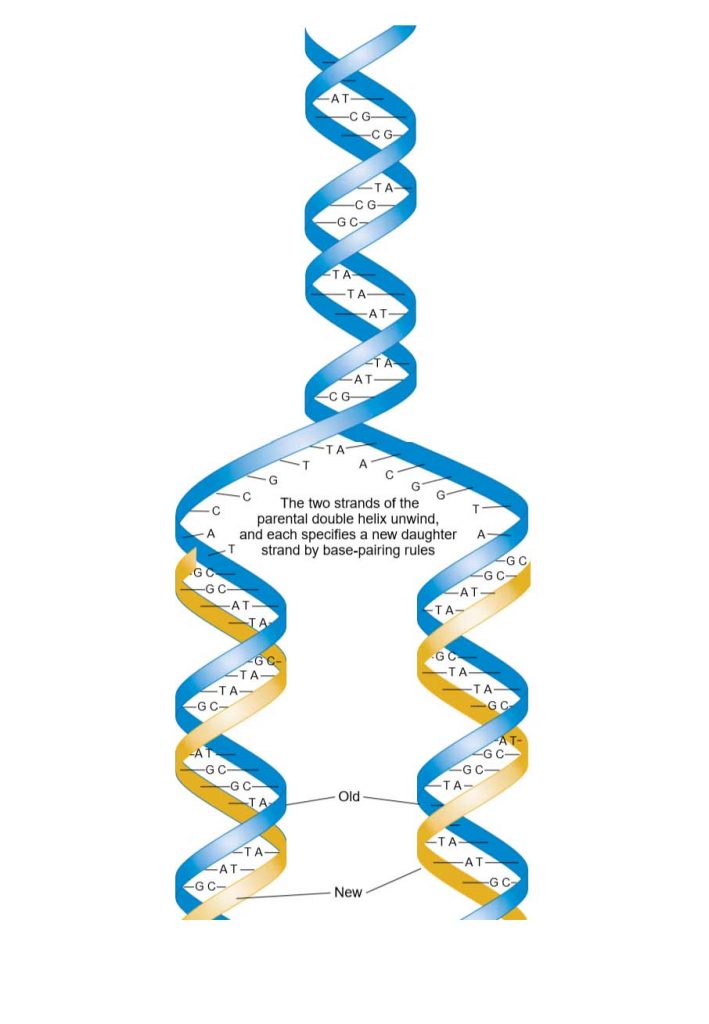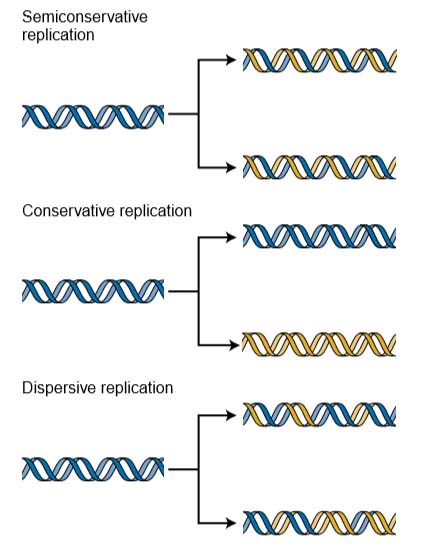The copying mechanism to which Watson and Crick referred is called semiconservative. The sugar-phosphate backbones are represented by thick ribbons, and the sequence of base pairs is random. Let’s imagine that the double helix is like a zipper that unzips, starting at one end (at the bottom in Figure 1)
We can see that, if this zipper analogy is valid, the unwinding of the two strands will expose single bases on each strand. Each exposed base has the potential to pair with free nucleotides in solution. Because the DNA structure imposes strict pairing requirements, each exposed base will pair only with its complementary base, A with T and G with C.
Thus, each of the two single strands will act as a template, or mold, to direct the assembly of complementary bases to reform a double helix identical with the original. The newly added nucleotides are assumed to come from a pool of free nucleotides that must be present in the cell.
If this model is correct, then each daughter molecule should contain one parental nucleotide chain and one newly synthesized nucleotide chain.

Fig 1: Semiconservative DNA replication. The model of DNA replication proposed by Watson and Crick is based on the hydrogen-bonded specificity of the base pairs. Parental strands, shown in blue, serve as templates for polymerization. The newly polymerized strands, shown in orange, have base sequences that are complementary to their respective templates.
Three different ways in which a parental DNA molecule might be related to the daughter molecules
However, a little thought shows that there are at least three different ways in which a parental DNA molecule might be related to the daughter molecules. These hypothetical modes of replication are called semiconservative (the Watson–Crick model), conservative, and dispersive (Figure 2).
In semiconservative replication, the double helix of each daughter DNA molecule contains one strand from the original DNA molecule and one newly synthesized strand.
However, in conservative replication, the parent DNA molecule is conserved, and a single daughter double helix is produced consisting of two newly synthesized strands.
In dispersive replication, daughter molecules consist of strands each containing segments of both parental DNA and newly synthesized DNA.

Fig 2: Three alternative patterns for DNA replication. The Watson–Crick model would produce the first (semiconservative) pattern. Orange lines represent the newly synthesized strands.
Next Meselsen and Stahl Experiments